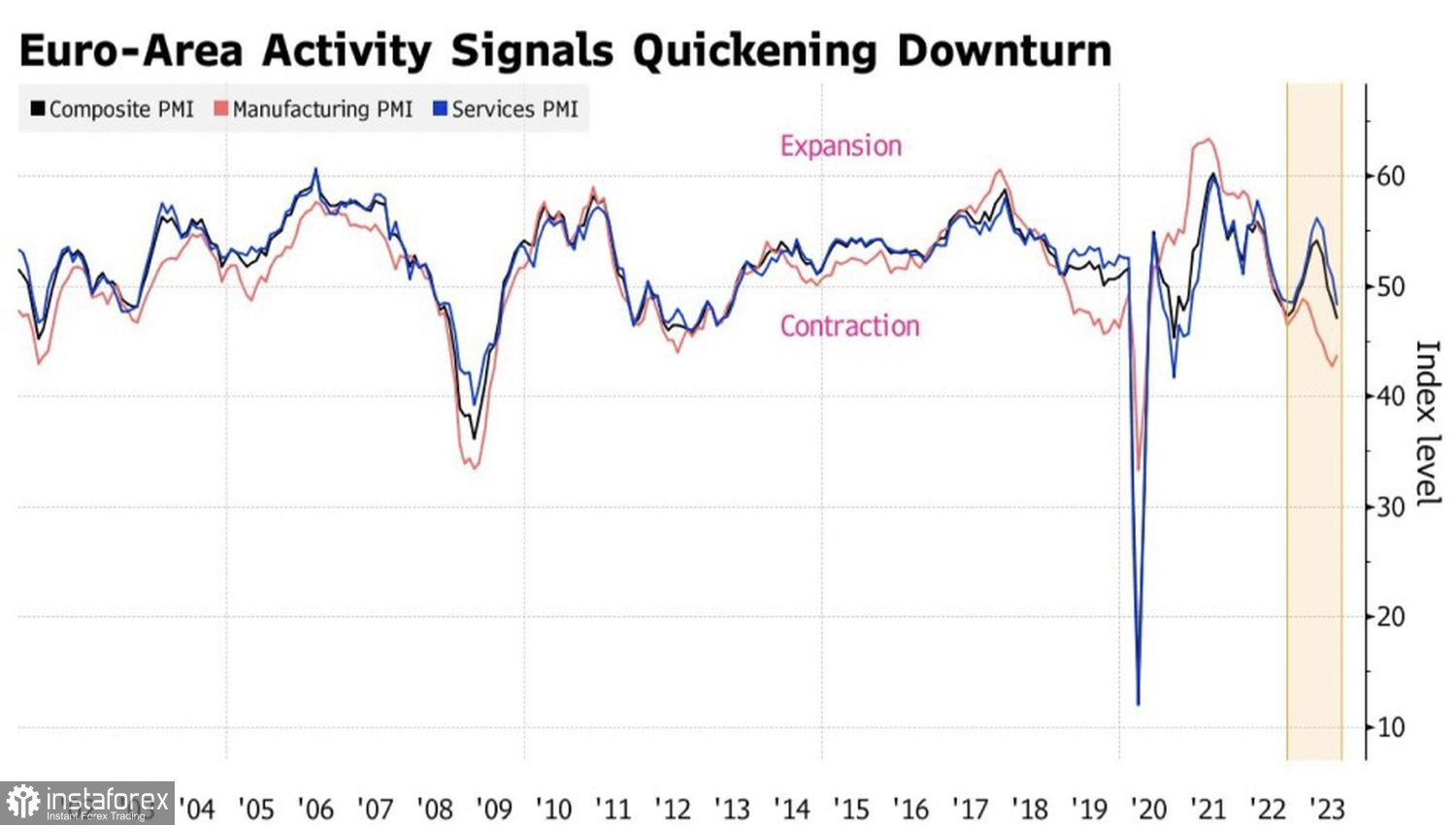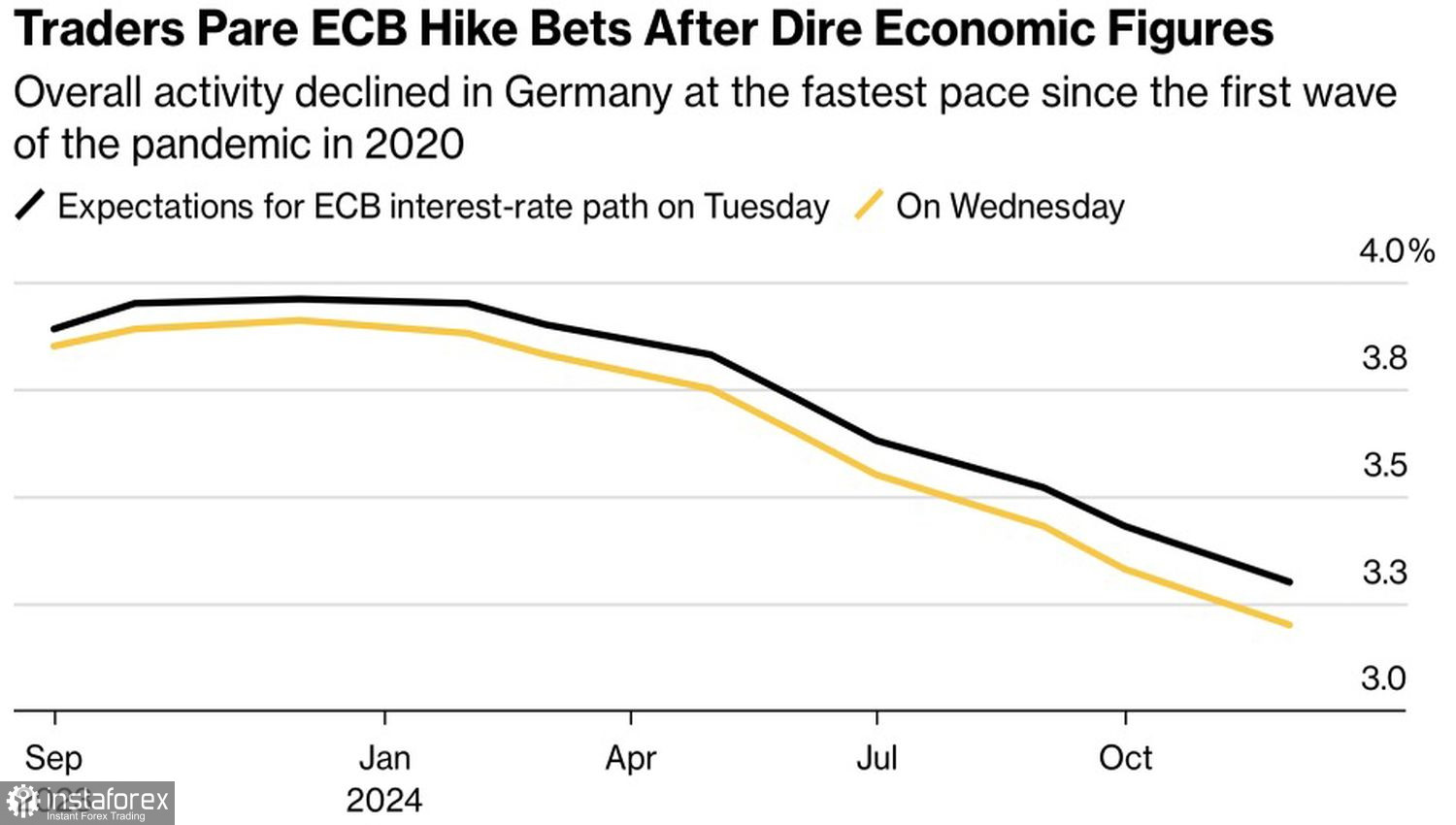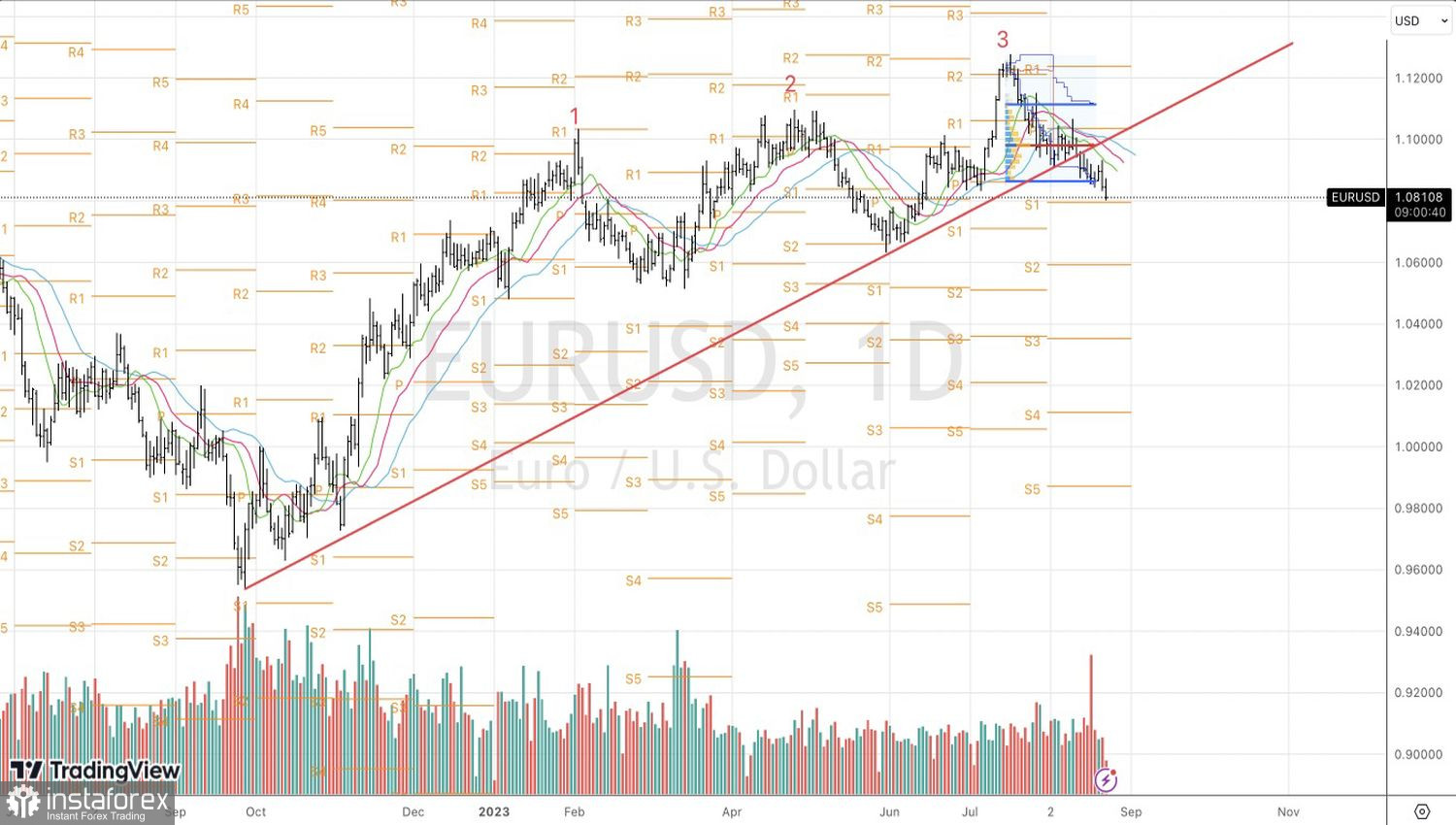The Eurozone economy has long appeared to be gasping for breath. Its 0.3% growth in the second quarter was driven by successes in Ireland, where international companies are headquartered due to the country's low tax rates. And now, another blow: in August, business activity in the services sector fell below the critical mark of 50 for the first time since the end of 2022. As a result, there's talk in the market of a 0.2% GDP decline in the third quarter, and EUR/USD nearly hit a target of 1.08 based on previously established shorts.
The main culprits for the fall of the Eurozone's composite PMI to 47 were Germany and France. German purchasing managers' indices fell at the fastest pace since the first wave of the pandemic led to an economic shutdown and lockdowns in 2020. Paris reported a third consecutive decline in business activity in the country's manufacturing sector.
Eurozone Business Activity Dynamics

The grim prospects for the region's economy are compounded by strikes at LNG production facilities in Australia, which threaten to drive up gas prices and revive fears of another energy crisis. At the same time, arguments from ECB centrists in favor of maintaining the deposit rate at the current 3.75% in September are growing. The futures market, following PMI data, lowered its peak expectations, putting pressure on EUR/USD.
In the U.S., on the other hand, the risks of resuming the monetary tightening cycle are growing. Derivatives have increased the likelihood of borrowing costs rising to 5.75% or higher by the end of the year to 39%. The rapid rally in Treasury bond yields to the highest levels in over a decade is pushing the Federal Reserve to take decisive action, even against the backdrop of a significant inflation slowdown.
ECB Deposit Rate Expectation Dynamics

Investors are waiting for Fed Chairman Jerome Powell to indicate that all options remain open for the Federal Reserve. Whether it's a prolonged hold of the federal funds rate at 5.5% or an increase by another 25 basis points. As a result, the divergence in monetary policy is favoring the "bears" for EUR/USD, as is the difference in economic growth between the U.S. and the Eurozone. Is it any surprise that the main currency pair is plummeting?

What's next? The demand for the dollar is supported by the strength of the economy and rising Treasury yields. Of course, one might assume that U.S. macro statistics will soon begin to deteriorate, and debt problems will prompt investors to flee to bonds. But when exactly will this happen? Some believe that only one or two acts of monetary tightening have negatively impacted the U.S. economy. Before that, the Fed was simply returning rates to a normal state.
The technical pullback of EUR/USD, provoked by the 'Three Indians' pattern, is gaining momentum. The break of the trendline and the bulls' inability to move above it indicate that a trend breakdown is imminent. A successful test of support at 1.08 will catalyze a further plunge towards 1.066 and 1.052. The recommendation is to sell.





















